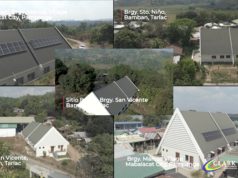ANGELES CITY- The Comprehensive Agrarian Reform Program (CARP) ended Monday with a big farmers’ group rating it as “bloodiest”: 96 farmers killed in agrarian reform controversies under the Aquino administration, and another 568 during the Arroyo government, for a total of 664 deaths.
“For 26 years, the bogus CARP has been guilty of the bloodshed and human rights violations against the Filipino peasants,” the Kilusang Magbubukid ng Pilipinas (KMP) said in a statement.
KMP Chair Rafael Mariano noted that “in the four years of the Aquino regime alone, 96 farmers were killed, while in the nine years of the Arroyo administration, 568 farmers fell victims to agrarian-related extra-judicial killings.”
“Farmers asserting their rights to the land were subjected to human rights abuses, while peasant leaders were rendered as criminals, incarcerated and, worse, were massacred,” Mariano said.
He cited the massacres in Escalante in Negros, in Lumil in Silang, Cavite, in Palo in Leyte, and the Hacienda Luisita massacre in Mendiola, Manila. “The blood that was spilled in Mendiola on January 22, 1987, killing 13 farmers and the massacres after that, serve as a reminder that justice will remain to be elusive for the farmers as long as the sham CARPER persist,” Mariano said.
CARP expired June 30 after Congress went on recess without approving a proposal, certifi ed as urgent by Pres. Aquino, to extend it for another two years.
The Alyansa ng Magbubukid ng Gitnang Luson (AMGL) lauded its “natural death”, even as the group batted for the passage of a “genuine land reform program” proposed by Mariano in Congress. The KMP cited figures from the Department of Agrarian Reform (DAR) indicating that from July 1987 to June 2012, the agency processed 494,945 agrarian law implementation (ALI) cases.
KMP said the Sentro para sa Tunay na Repormang Agraryo (Sentra), an institution rendering legal and para-legal services to farmers facing agrarian disputes, is handling more than 200 cases involving 15,500 farmers charged with different cases ranging from exemption from agrarian reform coverage, landuse conversion, forced eviction, and criminalized agrarian disputes.
“All of these cases, a reminder of CARP’s failure, remain unresolved and in fact, will outlive the sham land reform program,” Mariano said. “This includes high-profi le agrarian cases like Hacienda Luisita in Tarlac and Hacienda Looc in Batangas,” Mariano said, noting that “in Hacienda Luisita alone, there are more than 80 criminal cases stemming from the agrarian dispute.”
Mariano said that “among the most controversial cases of the criminalization of agrarian dispute involving 604 hectares of mango orchard is the case of the ‘Mamburao 6’.” “It’s the baseless case of six farmers from Mamburao town in Occidental Mindoro that included then KMP national council member Manolito Matricio who were sentenced by a Quezon City Court to life imprisonment for allegedly killing the landlord’s son,” he recalled.
Citing figures from Sentra, the KMP noted more than 120 peasant political prisoners in the country today. Mariano said “the continuing agrarian- related violence suffered by farmers at the hands of landlords and the state affirms that big landlords will not give the lands to farmers on a silver platter.”
“The struggle for land is a life and death struggle. Genuine land reform can only be realized only through the Filipino peasantry’s hard struggle and collective assertion of their rights to the land. These are the biggest lessons in the Filipino peasantry’s centuries-old struggle for genuine land reform,” Mariano said.
The KMP and AMGL reiterated calls for the enactment of a new and genuine and thoroughgoing land reform program embodied in House Bill 252 or the Genuine Agrarian Reform Bill which called for the free distribution of millions of hectares of private agricultural lands still in the hands of landlords.
“Based on the government’s 1988 Listasaka program, there are 8.9 million hectares of private agricultural lands and granting that the DAR’s socalled accomplishment of distributing 2.6 million hectares of lands is correct there are still 6.3 million hectares of private agricultural lands remains under the control of big landlords and agro-corporations,” Mariano noted.




